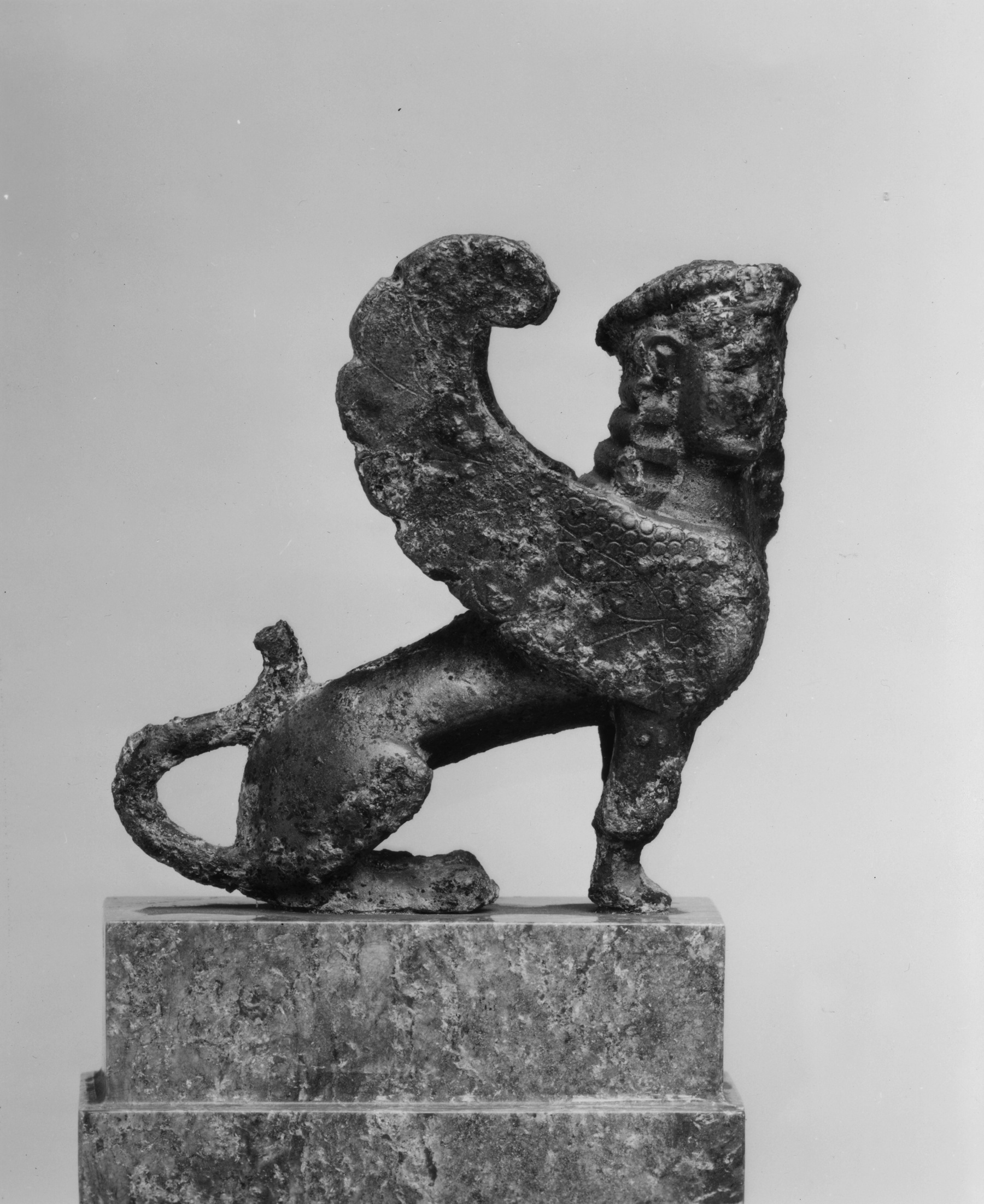Sphinx
(Ancient Greece )
In Greek art, the sphinx was represented as a winged monster with a lion's body and a woman's head. According to the legend of Oedipus, the sphinx devoured men who failed to solve her riddle. Associated with the underworld, she was also a tomb guardian and a protector. During the 7th and 6th centuries BC, statues and statuettes of sphinxes were common dedications in sanctuaries or tombs and were also used as decorative elements on furniture or vessels, like the figurine shown here.
Provenance
Provenance (from the French provenir, 'to come from/forth') is the chronology of the ownership, custody, or location of a historical object. Learn more about provenance at the Walters.
Jean P. Lambros Collection Sale, Athens, 1912, no. 208; Henry Walters, Baltimore, 1912, by purchase; Walters Art Museum, 1931, by bequest.
Exhibitions
| 2009 | Things With Wings: Mythological Figures in Ancient Greek Art. Ward Museum, Salisbury. |
| 2005-2006 | Things With Wings: Mythological Figures in Ancient Greek Art. The Walters Art Museum, Baltimore. |
| 2002 | A Renaissance Gem Revealed: Petrarch's Triumphs Disbound. The Walters Art Museum, Baltimore. |
Conservation
| Date | Description | Narrative |
|---|---|---|
| 7/14/1970 | Examination | examined for condition; other |
Geographies
Greece (Place of Origin)
Measurements
3 in. (7.6 cm)
Credit Line
Acquired by Henry Walters, 1912
Location in Museum
Not on view
Accession Number
In libraries, galleries, museums, and archives, an accession number is a unique identifier assigned to each object in the collection.
In libraries, galleries, museums, and archives, an accession number is a unique identifier assigned to each object in the collection.
54.1194


